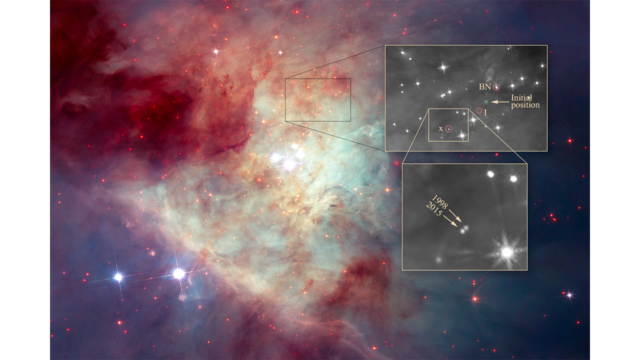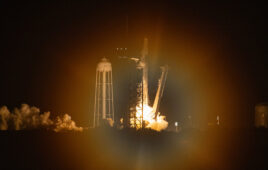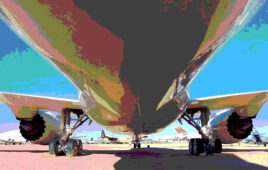
Wayward newborn stars fleeing from their birthplace. Credit: NASA, ESA, K. Luhman (Penn State University), and M. Robberto (STScI)
Researchers finally understand what caused the breakup in the Orion Nebula.
At one point in time the stars in this galaxy were battling each other in a gravitational tussle, that ended with the system breaking apart and at least three stars being ejected in different directions.
The speedy, wayward stars were previously unnoticed until a few decades ago when two of them were spotted using infrared and radio detection methods, which could penetrate the thick dust in the Orion Nebula.
Astronomers previously observed two stars, which can be traced back 540 years to the same location, traveling at high speeds in opposite directions, which suggests they were part of a now-defunct multiple-star system.
However, the pair’s combined energy is propelling them outward, revealing that there must be at least a third star that robbed energy from the stellar toss-up.
Astronomers using NASA’s Hubble Space Telescope have finally pieced this together by revealing a third runaway star.
“The new Hubble observations provide very strong evidence that the three stars were ejected from a multiple-star system,” lead researcher Kevin Luhman of Penn State University, said in a statement. “Astronomers had previously found a few other examples of fast-moving stars that trace back to multiple-star systems and therefore were likely ejected.
“But these three stars are the youngest examples of such ejected stars. They’re probably only a few hundred thousand years old,” he added. “In fact, based on infrared images, the stars are still young enough to have disks of material leftover from their formation.”
The three stars are moving out of the Kleinmann-Low Nebula—the most active star forming region of the Orion Nebula—at up to almost 30 times the speed of most of the nebula’s stellar inhabitants.
The astronomers used computer simulations to predict that these gravitational tugs-of-war should occur in young clusters with newborn stars crowded together.
“But we haven’t observed many examples, especially in very young clusters,” Luhman said. “The Orion Nebula could be surrounded by additional fledging stars that were ejected from it in the past and are now streaming away into space.”
Luhman discovered the third star dubbed “source x” while he was hunting for free-floating planets in the Orion Nebula as a member of an international team led by Massimo Robberto of the Space Telescope Science Institute in Baltimore.
After analyzing the discovery, Luhman compared the new infrared images taken in 2015 with infrared observations taken in 1998 and noticed that source x had changed its positon considerably relative to nearby stars over the 17 years, indicating that the star was moving at about 130,000 miles per hour.
Luhman then looked at the star’s previous locations, projecting its path throughout history and realized that in the 1470’s the star had been near the same initial location in the Kleinmann-Low Nebula as the other two runaway stars—called Becklin-Neugebauer (BN) and “source I.”
BN was discovered in 1967 using infrared images but its rapid motion wasn’t detected until 1995, when radio observations measured the star’s speed at 60,000 miles per hour.
Source I, which is traveling at roughly 22,000 miles per hour, had only been detected in radio observations because it is so heavily enshrouded in dust, its visible and infrared light is largely blocked.
According to Luhman, the three stars were most likely ejected from their home when they engaged in a game of “gravitational billiards.”
He said what happens when a multiple system falls apart is that two of the member stars move close enough to each other that they merge or form a very tight binary. In either case, the event releases enough gravitational energy to propel all of the stars in the system outward.
The energetic episode also produces a massive outflow of material, which is seen in infrared images as fingers of matter streaming away from the location of the embedded source I star.
Astronomers can use future high-powered telescopes to possibly identify more runaway stars from other multiple-star systems that broke apart.




